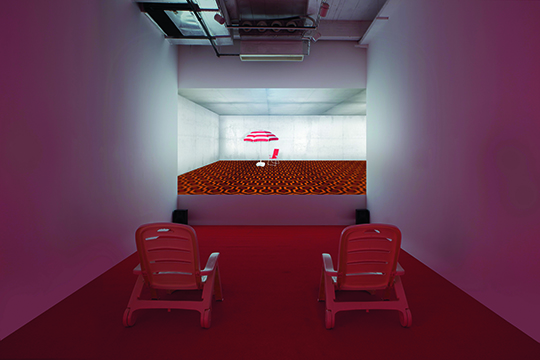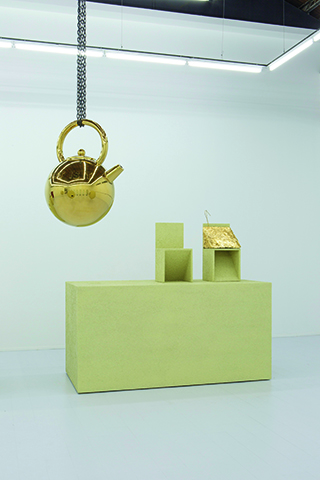YU HONGLEI: FAT MOUSE
| March 31, 2015 | Post In LEAP 31
ANTENNA SPACE, SHANGHAI
2014.11.08~2015.01.15
Yu Honglei belongs to a group of young artists making an impression based on their interest in cultural spaces beyond the art world. Although their work does not always stylistically diverge from the admittedly louder and brasher emerging artists focusing on the mechanics of the art world itself, their break is actually a radical one, based as much in practice and lifestyle as background and ambition. Unique among even this peer group, however, Yu is a keen observer of the translations, transitions, and circulations of imagery throughout art over time. As he demonstrates with this exhibition, he is as comfortable quoting Brancusi as he is The Shining; media artifacts from both end up in the digital spaces of his video. Forms from these moments in art history—and many, many others—appear again in his sculptural practice, for which a deft hand with material molds intensely awkward forms that harbor memories and impressions of culture as it is and as it might have been.

Here, Seussian green wigs form a row of totem poles; there, the role of the artist is deconstructed into its proper constituent elements on a kettle: “art is t.” A waffle is slipped furtively inside of a massive cube. Complex narratives that disappear as soon as they materialize hide within the connections across relic and niche, field and ground. Yu is a sculptor in the deepest sense, but he draws on the compositional logic of painting and the cutand-paste systems of digital culture to deal with his objects and the spaces they create. He has not yet entirely perfected how to best frame his work around the edges: at places, the exhibition seems to rely on conceptual turns a touch too tight for many viewers, and a table explaining many of the references in the video work could have been left out (particularly as many of these digital objects are self-evident, whereas the physical pieces included are significantly more obscure).

Yu encourages two distinct camps of partisans: those who appreciate his video, and those who appreciate his objects. Contrary to expectation, this distinction does not break down cleanly along market lines. Instead, his videos seem more popular with the collecting set; their ideas, perhaps, are more cleanly conveyed. The fact is that both the digital objects and the physical ones belong to the same category of images—an incredibly important category that constitutes the very field of action in the media-inundated sphere of contemporary art and cultural production today. The thesis is an old one and a clear one: art is life, and art is in life, because life takes place within images, and everything is fair game. Yu offers his audience a refresher course in the vocabulary of the everyday, terms visual and conceptual that ultimately become building blocks for his tinkering. His is the kind of work that one can’t help but believe in, if only for the fact that it subtly and unpretentiously subverts the games of power and hierarchy that have come to dominate so much of contemporary art in China.

